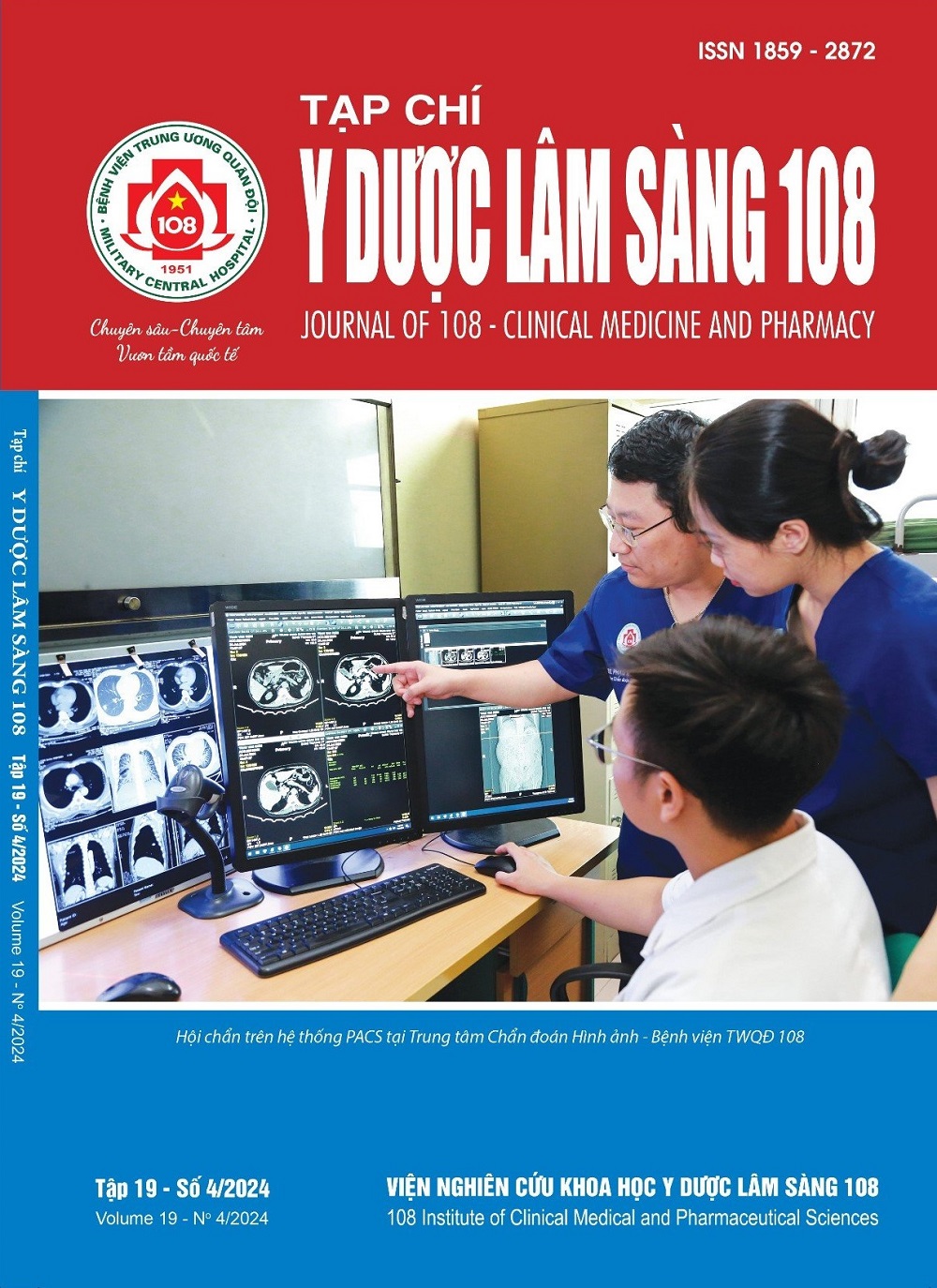Studying the value of multi-detector row computed tomography in diagnosing the stage of disease and prognosing the possibility of surgical resection of periampullary tumors
Main Article Content
Keywords
Abstract
Objective: To study the value of multi-detector row computed tomography in diagnosing the stage of disease and prognosing the possibility of surgical resection of periampullary tumors. Subject and method: A retrospective, prospective and descriptive study was carried out on 79 patients with clinically suspected periampullary tumors, underwent surgery and had pathological results, from May 2017 to February 2021 at 108 Military Central Hospital. Result: The accuracy of computed tomography (CT) in diagnosing periampullary tumors was 93.7%. CT was highly consistent with histopathological results in diagnosing tumor location of periampullary tumors with Kappa coefficient: 0.73. CT was highly consitent with surgery in assessing vascular invasion of periampullary tumors (Kappa coefficient: 0.871). CT was moderately consistent with histopathological results in assessing local invasion of periampullary tumors (Kappa coefficient: 0.423). Diagnosis of lymph node metastasis and disease stage of CT were moderately consistent with histopathological results with Kappa coefficient 0.417 and 0.405, respectively. Conclusion: Multi-detector row CT, collated to surgery and pathological results, is highly valuable in in diagnosing the stage of disease and prognosing the possibility of surgical resection of periampullary tumors.
Article Details
References
2. Maluf-Filho F, Sakai P, Cunha JE, Garrido T, Rocha M, Machado MC, Ishioka S (2004) Radial endoscopic ultrasound and spiral computed tomography in the diagnosis and staging of periampullary tumors. Pancreatology 4: 122-128.
3. Fong ZV, Tan WP, Lavu H et al (2013) Preoperative imaging for resectable periampullary cancer: clinicopathologic implications of reported radiographic findings. Journal of Gastrointestinal Surgery 17(6): 1098-1106.
4. Kanji ZS and Gallinger S (2013) Diagnostic and management of pancreatic cancer. CMAJ 1-7.
5. Imai H, Doi R, Kanazawa H, Kamo N, Koizumi M, Masui T, Iwanaga Y, Kawaguchi Y, Takada Y, Isoda H, Uemoto S (2010) Preoperative assessment of para-aortic lymph node metastasis in patients with pancreatic cancer. Int J Clin Oncol 15: 294-300.
6. Chen SC, Shyr YM, Wang SE (2013) Longterm survival after pancreaticoduodenectomy for periampullary adenocarcinomas. HPB 15: 951-957.
7. Roche CJ, Hughes ML, Garvey CJ et al (2003) CT and pathologic assessment of prospective nodal staging in patients with ductal adenocarcinoma of the head of the pancreas. AJR 180: 475-480.
8. Kulkarni NM (2019) Clinical staging of pancreatic cancer with MDCT and MRI. In book: management of localized pancreatic cancer. Springer: 9-28.
 ISSN: 1859 - 2872
ISSN: 1859 - 2872
